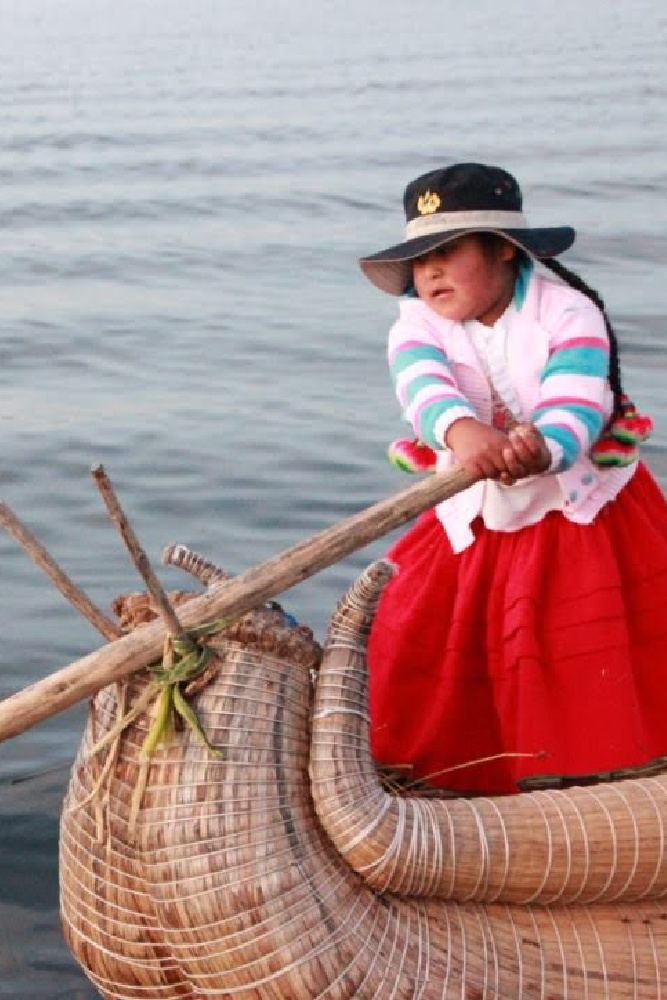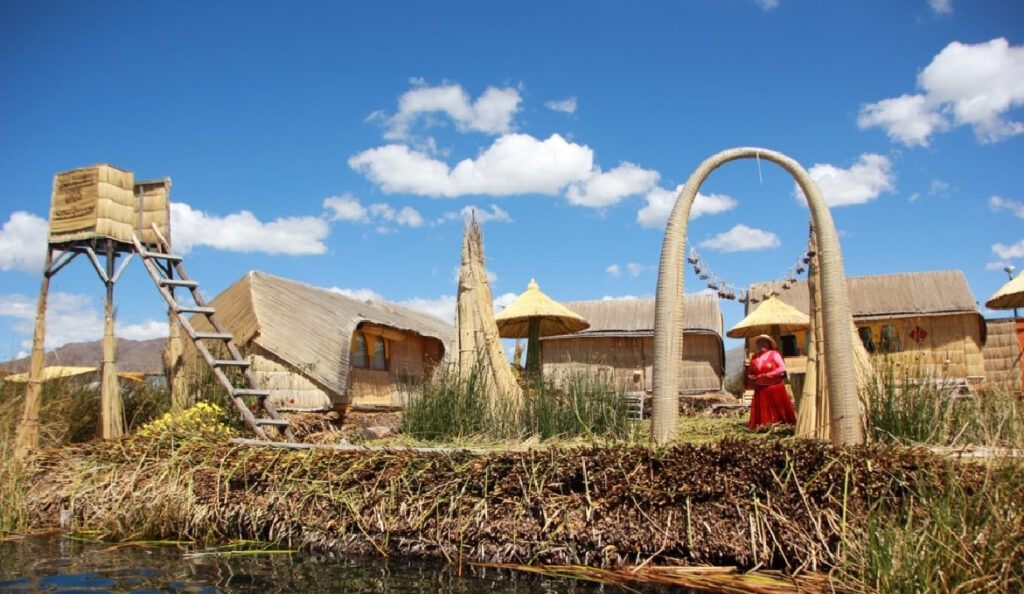
Although I’m from Lima, I have never had the opportunity to visit Puno, and it was always a place I longed to see.
When I was little, a young woman who helped with household chores lived with us for many years. Her name was Leandra, and she came from the Uros community on the floating islands of Lake Titicaca. At that time, I didn’t understand the tremendous change it had been for her to leave her home and go to the capital—the big city—to work. Only years later, I finally visited this beautiful corner of Peru, despite my friends persuading me not to go, warning me that I’d suffer from altitude sickness (soroche) and have a terrible time.
My journey began in Lima with a direct flight of less than an hour to Puno. Considering that Lima lies by the Pacific Ocean, arriving at Juliaca Airport—which sits at 3,826 meters above sea level—was an abrupt change that you feel immediately in your lungs and in the slow pace of everything. We headed straight to our hotel on the city’s outskirts, where we were kindly offered the classic coca tea, which we enjoyed alongside our Sorochil tablets.
That very day, we attempted to walk a few kilometers to see the flamingos, which, from our room, looked like pink cotton candy. Unfortunately, we only managed to reach the back of the hotel. We then realized we needed to take things slowly and acclimatize before facing our visit to the floating islands the next day.
After a short boat ride piloted by our host, we arrived at the island where we would stay. His wife, dressed in traditional polleras and brightly colored woolen clothes, was waiting for us on the shore with a big smile. The yellow island shone like the sun beneath the clear, blue sky of a beautiful day on Lake Titicaca.
If you are interested in sustainable stays, check out my experience Sleeping in an Eco Lodge in the Tambopata Amazon Jungle
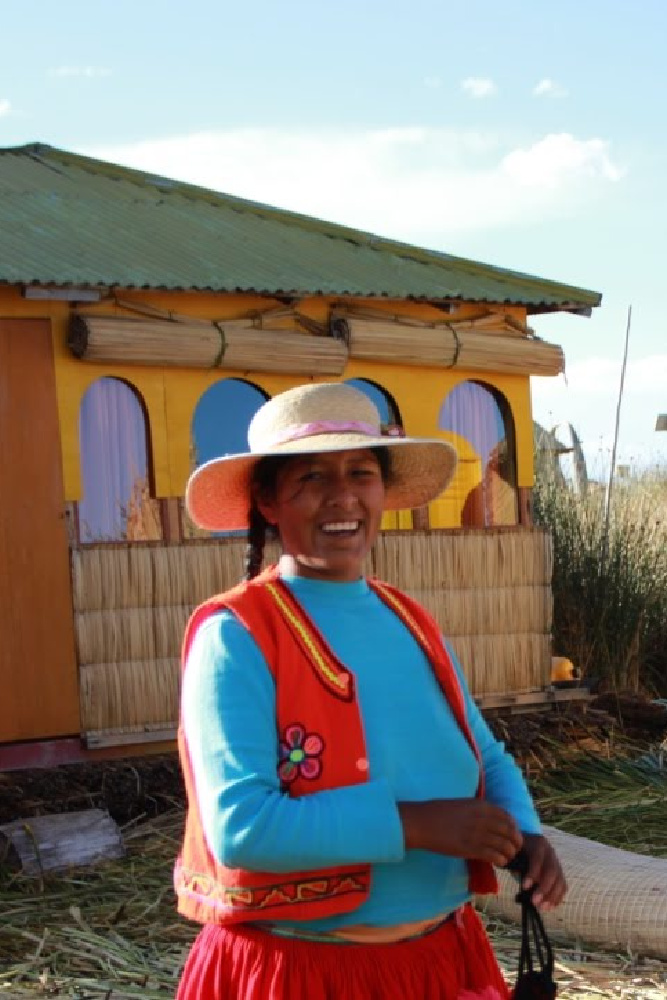
The family had set up rooms for their guests, offering lodging that included meals. The three of them—mother, father, and daughter—had reserved a part of the island for living, cooking, washing clothes, and more.
The little girl, who must have been about seven years old, was outgoing and playful; she delighted in interacting with tourists. She had rosy, sunburned cheeks from the intense sun that reflected like a mirror on the lake, and her shiny black hair was tied up in a long braid. She attended a school on one of the floating islands, and her father would take her there by boat.
Planning an eco-friendly trip? Learn How to Choose a Sustainable Accommodation to make the best choice!

We spent the day talking with the family. We learned about the demanding task of maintaining the island built from totora reeds, which, due to constant contact with water, decays and must be continually reinforced with additional layers of reeds. They had an entire island for themselves—an independent island. But they told us that it wasn’t always that way; previously, they shared the island with another family, but at some point, they no longer got along and decided to saw the island in half, dividing it into two parts—one for each family. Problem solved!
The tranquility and scenery at the Uros family’s home, combined with a slight bout of altitude sickness, made us lose track of time with every step as our feet sank into the reeds.
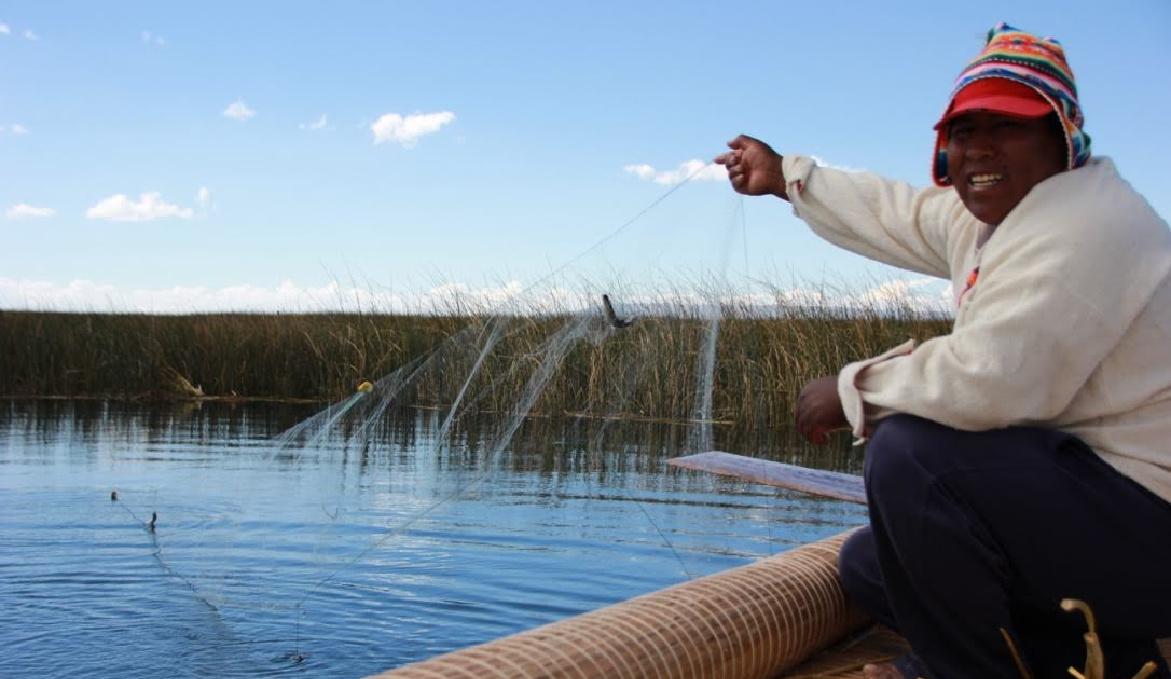
A sustainable stay on Lake Titicaca
A delightful surprise was dinner, which we shared with a young Swiss couple staying in the other room. The lady had prepared dishes that looked as if they had come straight from the kitchen of one of Lima’s best restaurants. After congratulating her for crafting such delicacies under such modest conditions, she told us that she had taken a cooking course at one of the best hotels in Cusco, where she learned to cook to offer better service to her guests.
It should be noted that maintaining and transporting groceries and other ingredients to the island is quite a feat. While there, a supply boat passed by once a day selling basic groceries—albeit at a higher price than in the city.
If you’re still planning your trip to Peru, check out my guide on Where to Stay in Lima—with tips on the best districts for travelers.
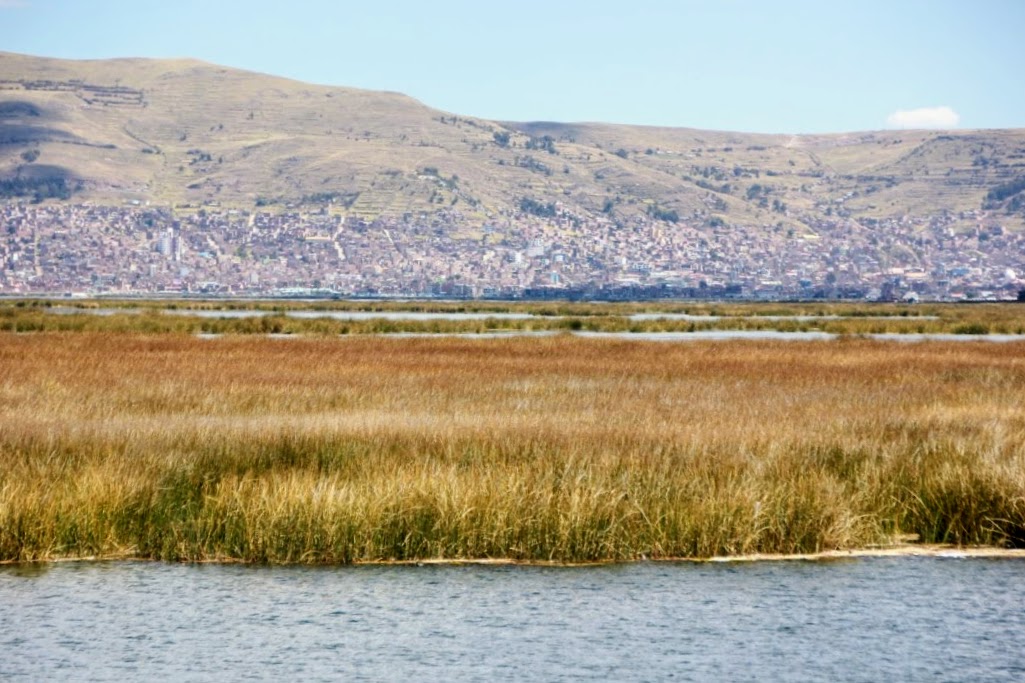
Unlike the sunny and pleasant day, the night was freezing, and in our beds, the numerous wool blankets felt as heavy as metal sheets on our bodies; thankfully, we were given plastic bottles filled with hot water to warm us up.
That’s how we spent the night. The next day, after a sumptuous breakfast, we had to say goodbye to this lovely family and return to Juliaca to continue our journey.
For more cultural experiences in Peru, explore Barranco’s Historic District—a must-visit in Lima!
🛖 You Might Also Like
If you’re drawn to meaningful stays and cultural connections, here are more travel stories rooted in sustainability and tradition:
🌿 Sleeping in an Eco Lodge in the Tambopata Amazon Jungle – Peru
🌊 7-Day Sumatra Itinerary – Orangutans, Jungle Treks & Pulau Weh Beaches
🏞️ Japan by Train – A Sustainable Travel Guide to Nagano & Shirakawa-go
🛕 Angkor Wat 3-Day Itinerary – Temples, Culture & History
🏛️ The Charming City of Gyeongju – South Korea’s Ancient Heart

